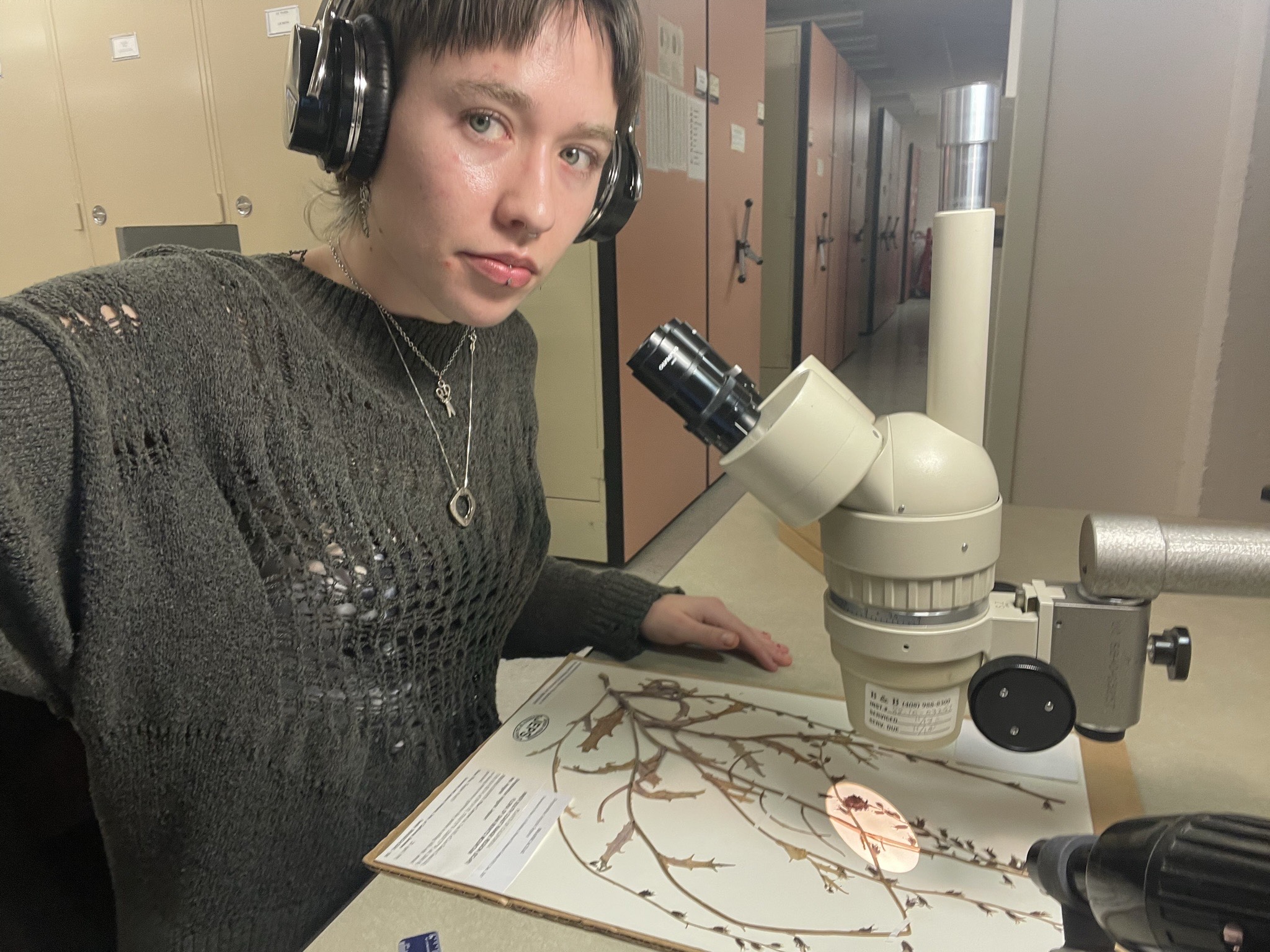Unique Flowers in Pinnacles National Park Sparks Investigation
By: Cho R. Adolfo

[image caption]
With petals smaller than your fingernail, you might miss the endangered jewelflower on your hike through Pinnacles National Park. Belonging to the mustard family of Brassicaceae, this perennial herb has been on the radar of several scientists in regards to its range and distribution. Even past CESU student Luis Orozco-Sanchez traveled miles in the backcountry gathering data on the rare flower.
Currently, CESU student Maia Supple is assisting Pinnacles Vegetation Ecologist Amelia Ryan, University and Jepson Herbaria Associate Director Staci Marcos and Principle Investigator Ivalu Cacho with their project aimed at uncovering potential taxonomic secrets within the jewelflower genus. The matter in question: how do we define this flower in the context of other life? Taxonomically, the debate falls around genera Streptanthus and Caulanthus.
With specimens from Pinnacles National Park, Supple is analyzing large collections of jewelflower morphology data at UC Berkeley’s University and Jepsen Herbaria . Supple’s Herbarium research work originated from the identification of a jewelflower at Pinnacles that does not look like the rest. This variance in morphological characteristics is calling the species into question. Globally, some species maintain a wide range of morphologies, whereas others may be strictly defined by specific characteristics . With the latter in mind, this team led by Ivalu Cacho seeks to describe a potentially new species of jewelflower through both genetic and morphological data.
Rearranging taxonomy is no new feat. As Supple explains it, this genus has experienced reclassification a number of times. “Naming and describing them is a very tricky subject”, they add.

With collaborators across several fields, various disciplines assist in uncovering the flower’s identity. For example, as an assistant, Supple is most concerned with morphological differences extracted from pressed specimens. While ecologist Amelia Ryan compares growth patterns in the garden sprouts themselves. Every nuance of the jewelflower is coming to the table. As the project continues, morphological data may sway conclusions in a direction contrary to genomics analysis. Thus, how does the scientific community find consensus on this species anomaly?
For now, this question rests within the minds of genetic professionals and morphological analysts like Supple. According to Maia, this project “puts into perspective how much work goes into classification”. In their words, this research requires “intense and crazy levels of dedication”.
As an undergraduate with a bit of plant research background, Supple is challenged to utilize new perspectives in their role as Jepson Herbaria assistant. “I am looking more at differences between species when I usually look for similarities” they share. Stating further that species names are important because they “give significance and power”. Inspiration and dedication is seen in this team’s ability to utilize complex multigenerational approaches within the scientific process, in an effort to give voice to the biodiversity of California’s beloved Pinnacles National Park.
